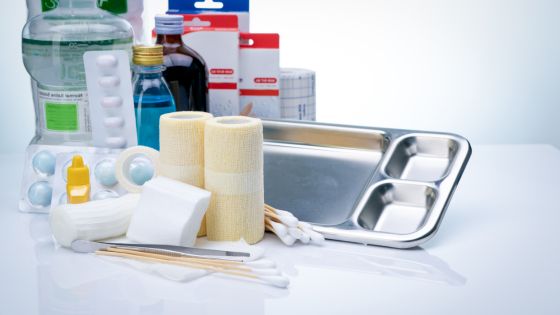The evolution of wound care products represents a significant leap in medical science, directly impacting patient recovery and quality of life. This article explores how modern wound care products have revolutionized treatment approaches, emphasizing advancements in technology and materials.

The Evolution of Wound Care
Traditional wound care involved simple dressings and limited options. Today, the field has expanded to include advanced products that cater to different types of wounds, from minor abrasions to complex chronic ulcers.
Types of Modern Wound Care Products
- Advanced Dressings: Include hydrogels, foam dressings, alginates, and hydrocolloids, designed to maintain optimal moisture and accelerate healing.
- Antimicrobial Dressings: Infused with silver or other antimicrobial agents to reduce infection risk.
- Growth Factor Therapy: Uses proteins to stimulate cell growth and wound healing.
- Negative Pressure Wound Therapy (NPWT): Uses suction to promote healing, particularly effective for deep or chronic wounds.
Benefits of Modern Wound Care
- Enhanced Healing: Advanced products accelerate the healing process, reducing recovery time.
- Infection Control: Antimicrobial properties lower the risk of wound-related infections.
- Customized Care: A wide range of products allows for personalized treatment based on the wound type and patient needs.
- Reduced Pain and Discomfort: Many modern dressings are designed to be less painful during changes and more comfortable for the patient.
The Role of Technology in Wound Care
- Smart Dressings: Incorporate sensors to monitor wound conditions like pH and temperature, aiding in timely and precise care.
- 3D Printing: Used for creating customized dressings or skin grafts tailored to individual wounds.
- Telemedicine: Facilitates remote monitoring and consultation, improving access to wound care specialists.
Innovative Materials in Wound Care
Research in material science has led to the development of dressings with enhanced properties:
- Biocompatible Materials: Reduce the risk of allergic reactions and improve comfort.
- Superabsorbent Materials: Efficiently manage exudate, keeping the wound environment optimal for healing.
- Nanotechnology: Nanofibers in dressings can deliver drugs directly to the wound or provide structural benefits.
The Impact of Modern Wound Care on Chronic Wounds
Chronic wounds, such as diabetic ulcers, benefit significantly from modern wound care products. These products can manage complex issues like excessive exudate, infection, and delayed healing, providing better outcomes for patients who previously had limited options.
Addressing the Challenges of Wound Care
Despite advancements, challenges remain in accessibility, cost, and education:
- Accessibility: Ensuring that advanced wound care products are available globally, especially in low-resource settings.
- Cost-Effectiveness: Balancing the benefits of advanced products with their often higher costs.
- Healthcare Professional Training: Providing ongoing education to healthcare providers on the latest products and techniques.
Ethical and Regulatory Considerations
The development and use of advanced wound care products involve ethical considerations, particularly in ensuring equitable access. Regulatory bodies like the FDA and EMA oversee the approval and monitoring of these products to ensure safety and efficacy.
Patient Education and Participation
Educating patients on wound care management, including the proper use of products and recognizing signs of infection or complications, is crucial for successful outcomes.
Recent Advances and Future Directions
The future of wound care looks promising, with ongoing research into even more effective and patient-friendly products. Areas of exploration include gene therapy, stem cell-based therapies, and further integration of digital technology in wound management.
Modern wound care products have significantly improved the way wounds are treated, offering faster healing, better infection control, and more personalized care. The integration of technology and innovative materials continues to push the boundaries of what is possible in wound management, making a profound impact on patient outcomes and the field of medicine as a whole.
